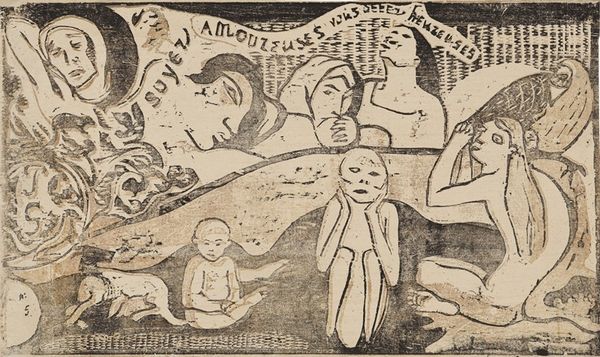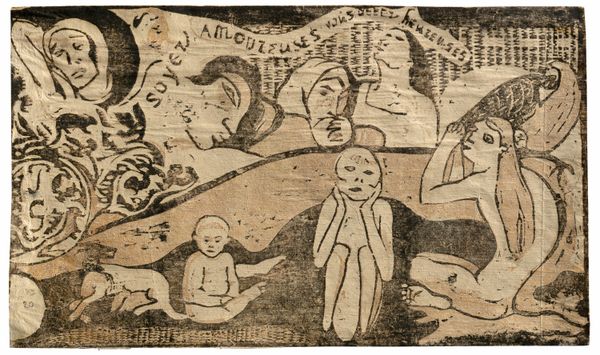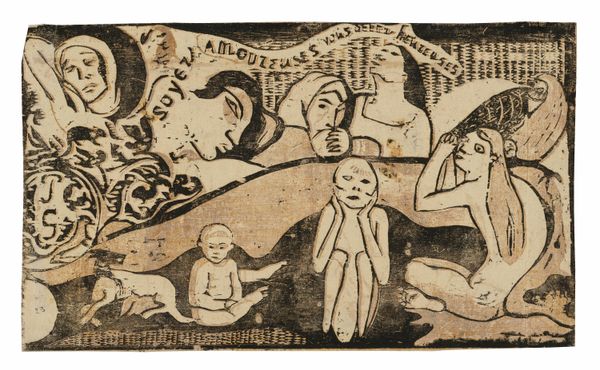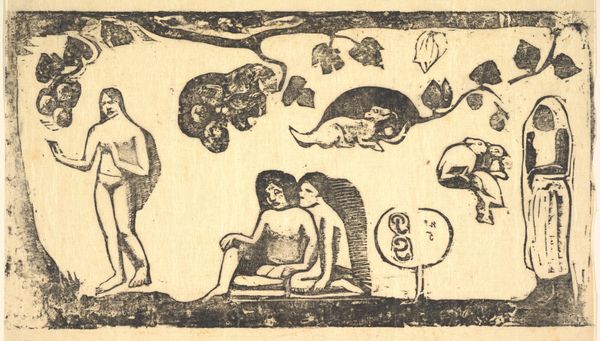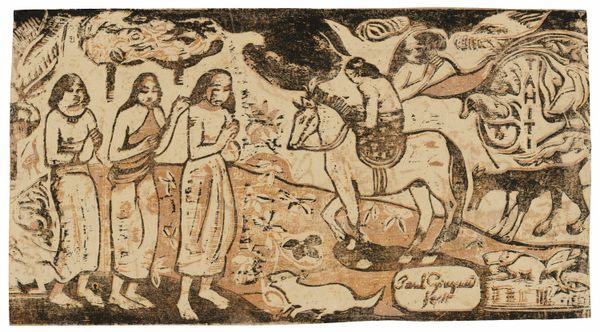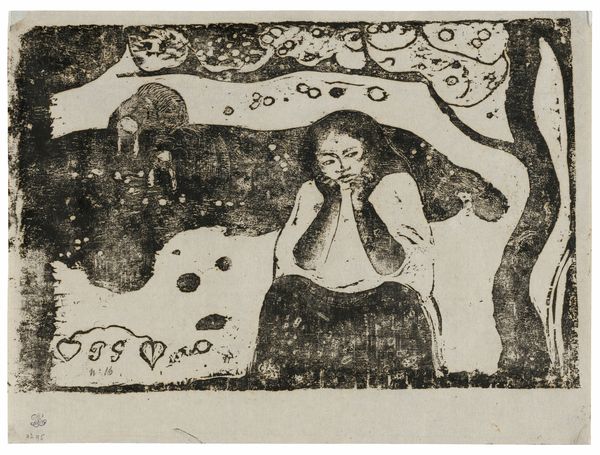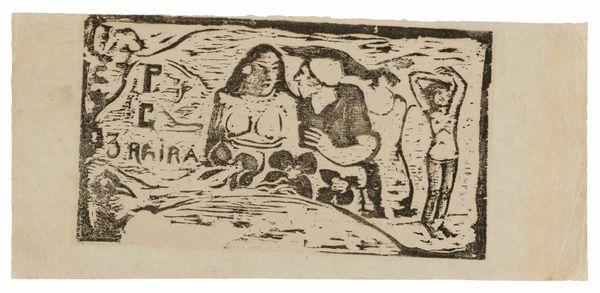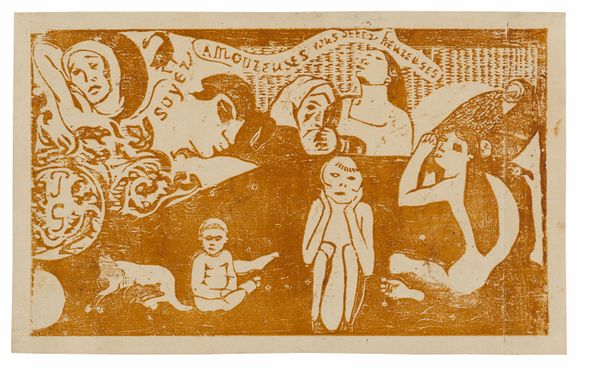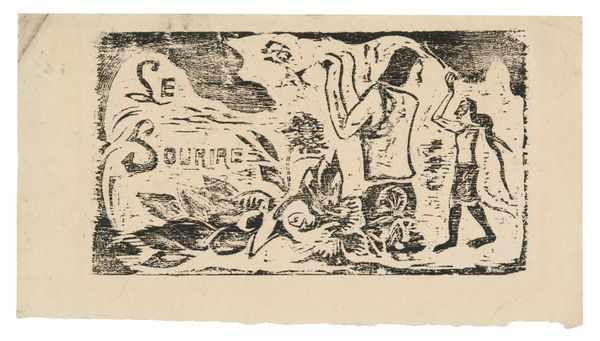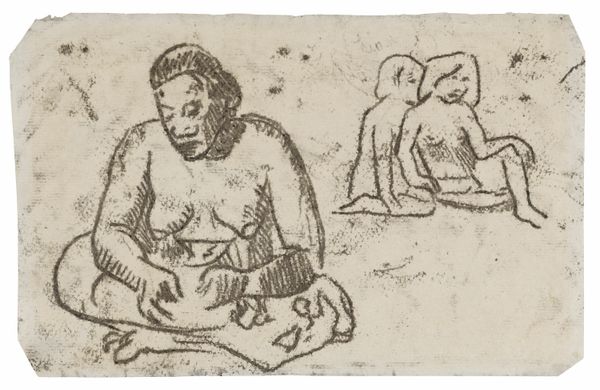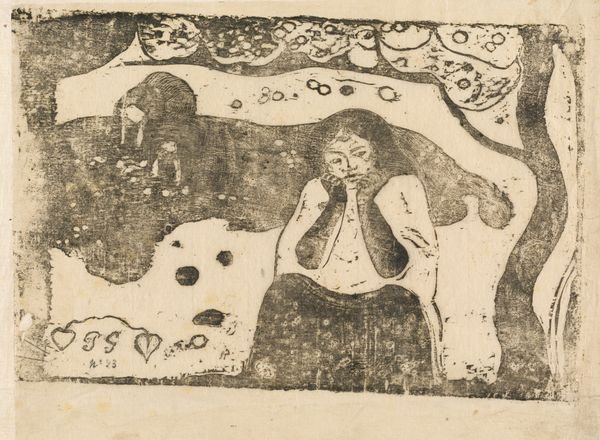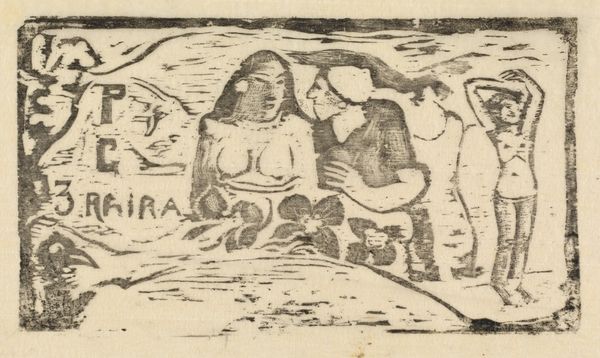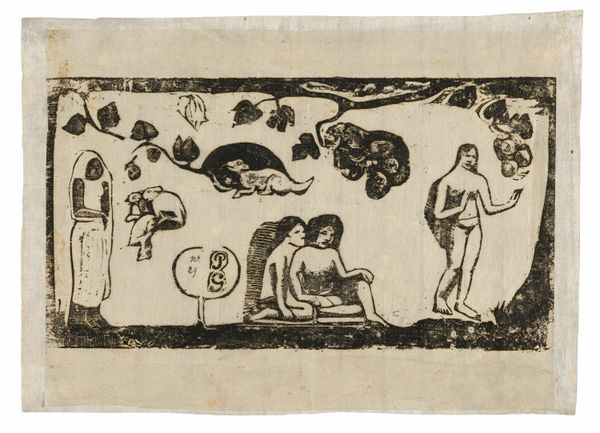
Be in Love and You will be Happy (Soyez amoureuses, vous serez heureuses) after 1895
0:00
0:00
print, ink, woodcut
#
narrative-art
#
ink painting
# print
#
figuration
#
ink
#
woodcut
#
symbolism
#
post-impressionism
Copyright: National Gallery of Art: CC0 1.0
Editor: Here we have Gauguin’s woodcut print, “Be in Love and You will be Happy,” created after 1895, using ink. The title almost feels ironic, considering the figures seem rather contemplative, maybe even a little melancholic. What do you see in this piece, something beyond the surface narrative? Curator: Oh, absolutely. Gauguin wasn't one for straightforward pronouncements, was he? Look at how he's mashed together these figures - some dreamy-eyed, some gazing upwards. The inscription itself… is it a command? A hopeful wish? Or perhaps a commentary on the impossibility of achieving happiness solely through romantic love? I find myself wondering, is this Tahiti as Gauguin experienced it, or Tahiti as he *felt* it? Editor: That’s a really interesting point. It definitely doesn’t scream blissful romance. The texture of the woodcut, the stark contrast… it lends a certain rawness, a primitive feel almost. Curator: Yes! That roughness is key. He’s intentionally eschewing the polished refinement of academic art for something more visceral, more emotionally immediate. I picture him wrestling with the woodblock, each gouge a physical manifestation of his inner turmoil. I almost imagine the scent of sandalwood, don't you? And those flat planes of color... they're less about depicting reality and more about constructing a mood. Editor: So, you think the somewhat unsettling nature of the image might be intentional, and reflect a personal state? Curator: Precisely! The quest for happiness, particularly through love, isn’t always a walk in a Tahitian garden, is it? Sometimes, it's a bit… gnarly. But isn’t it more truthful for that? He offers us more truth in this complex mess, than a posed smile would. Editor: I see what you mean. It's much more layered and honest than I initially thought. The figures hint at a story beneath the surface, not a simple declaration of joy. Curator: Exactly! The joy is in grappling with the nuances, questioning the very promise of the title. I guess that makes the viewer happy, somehow, hah! Editor: So it isn't so melancholic after all! I hadn't looked at it from that perspective. Thanks!
Comments
No comments
Be the first to comment and join the conversation on the ultimate creative platform.
